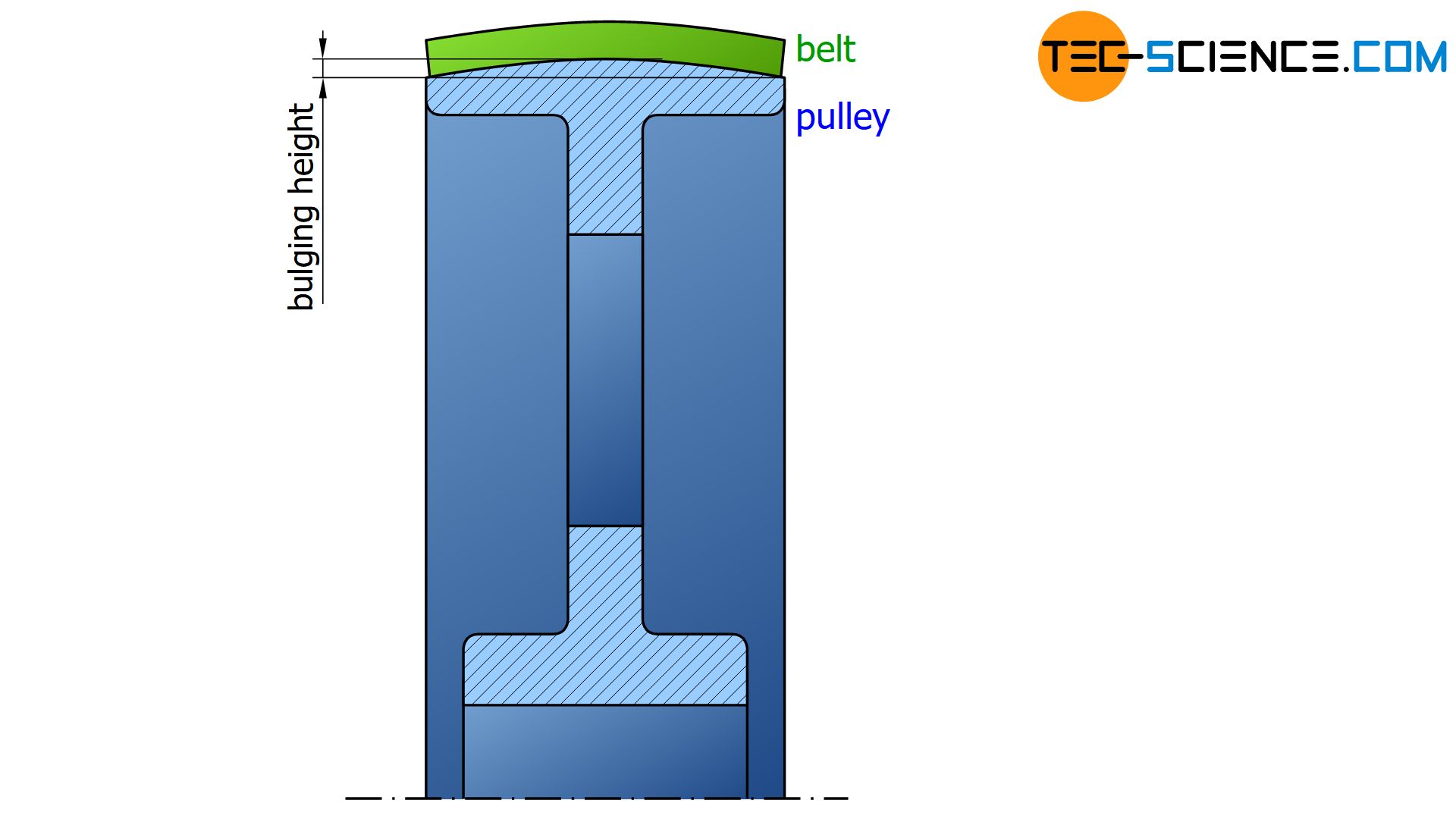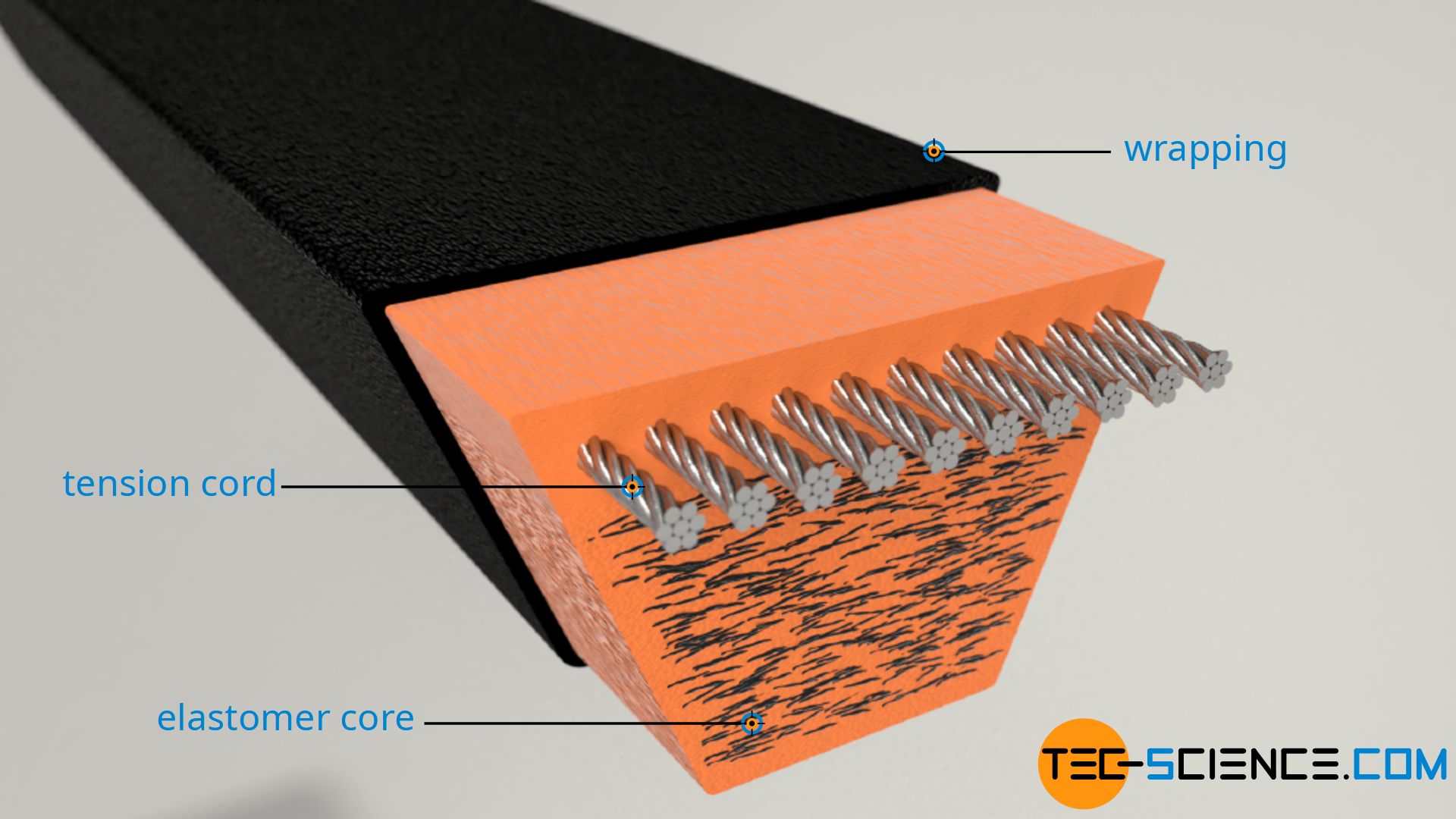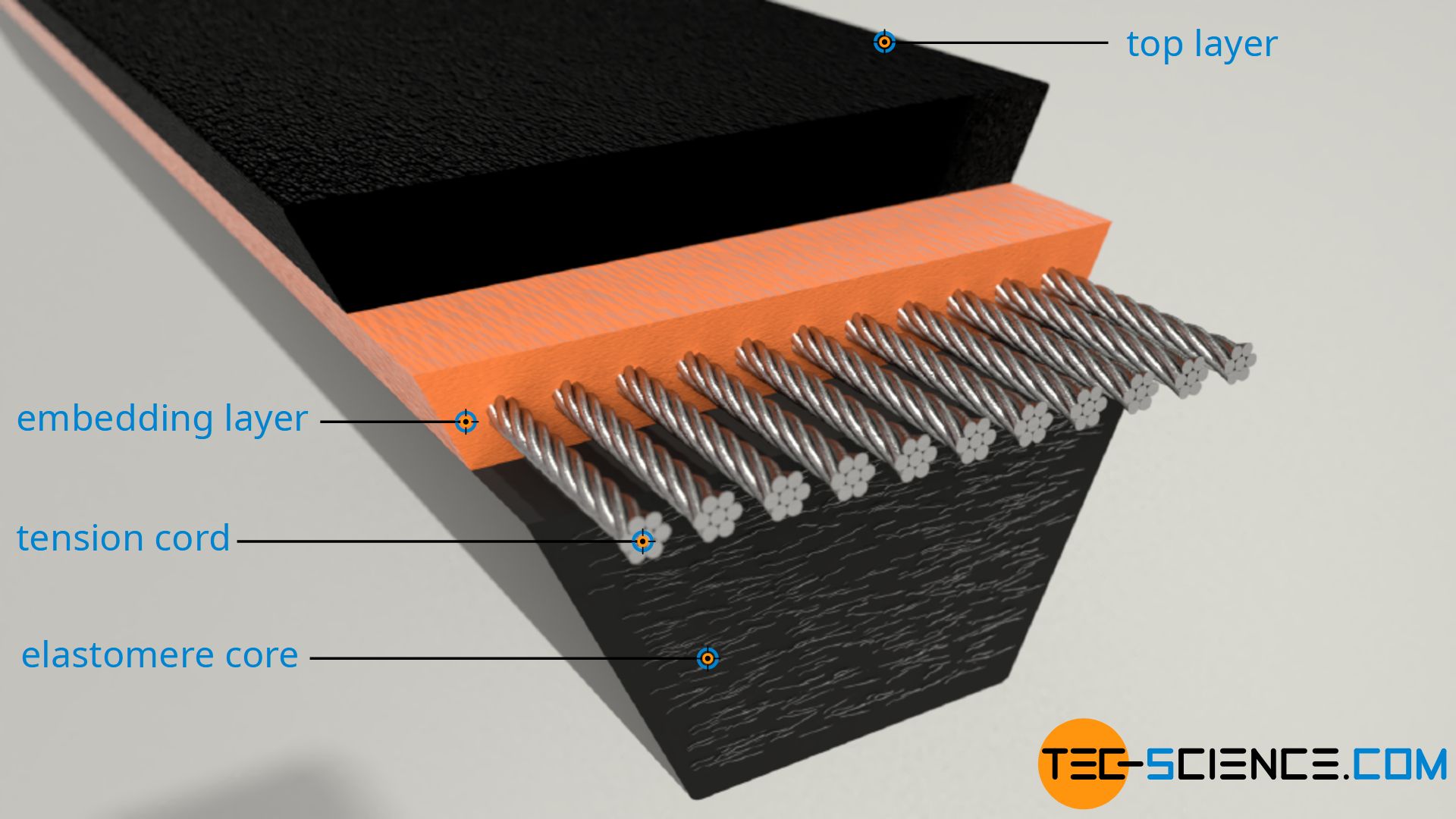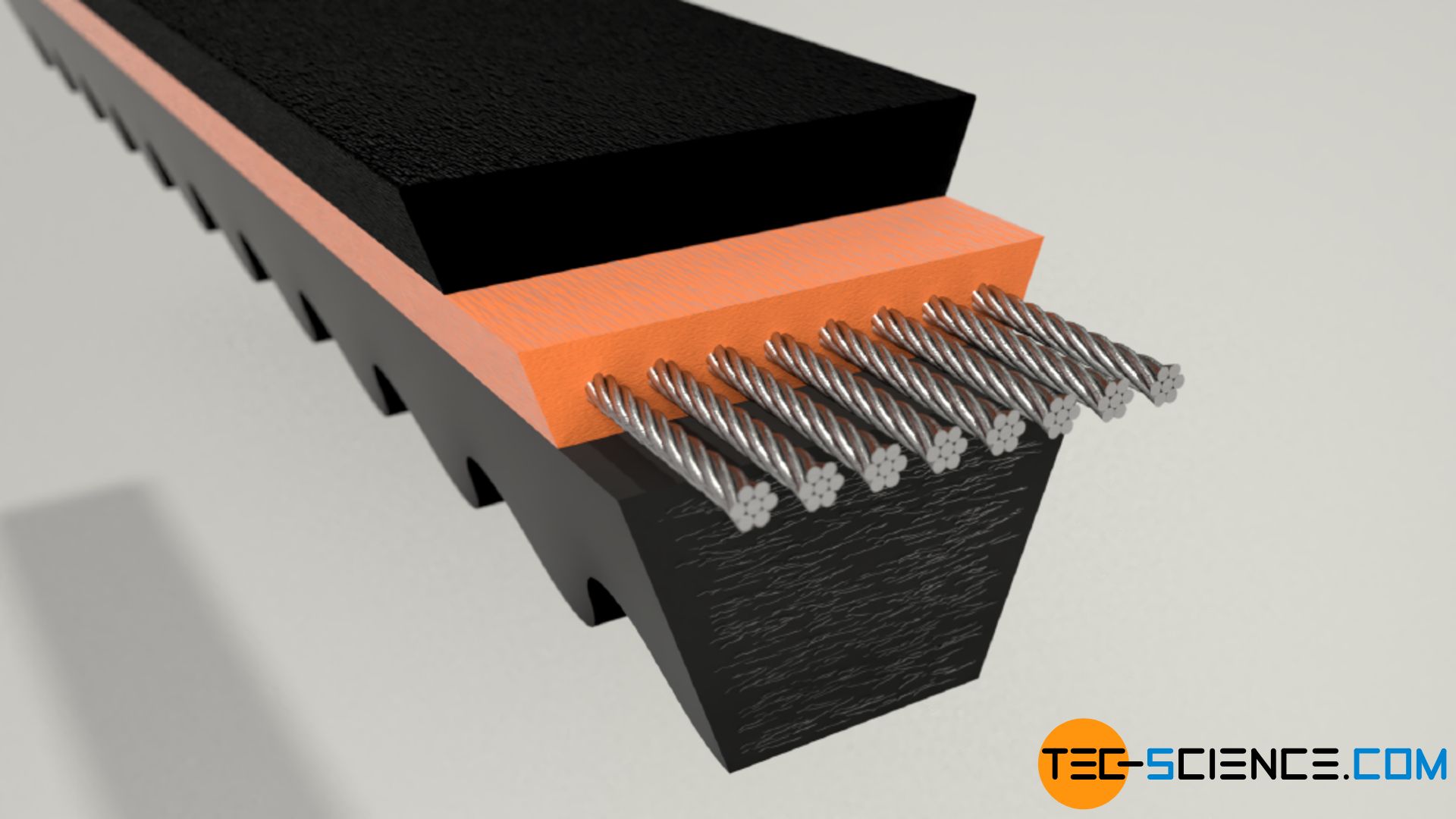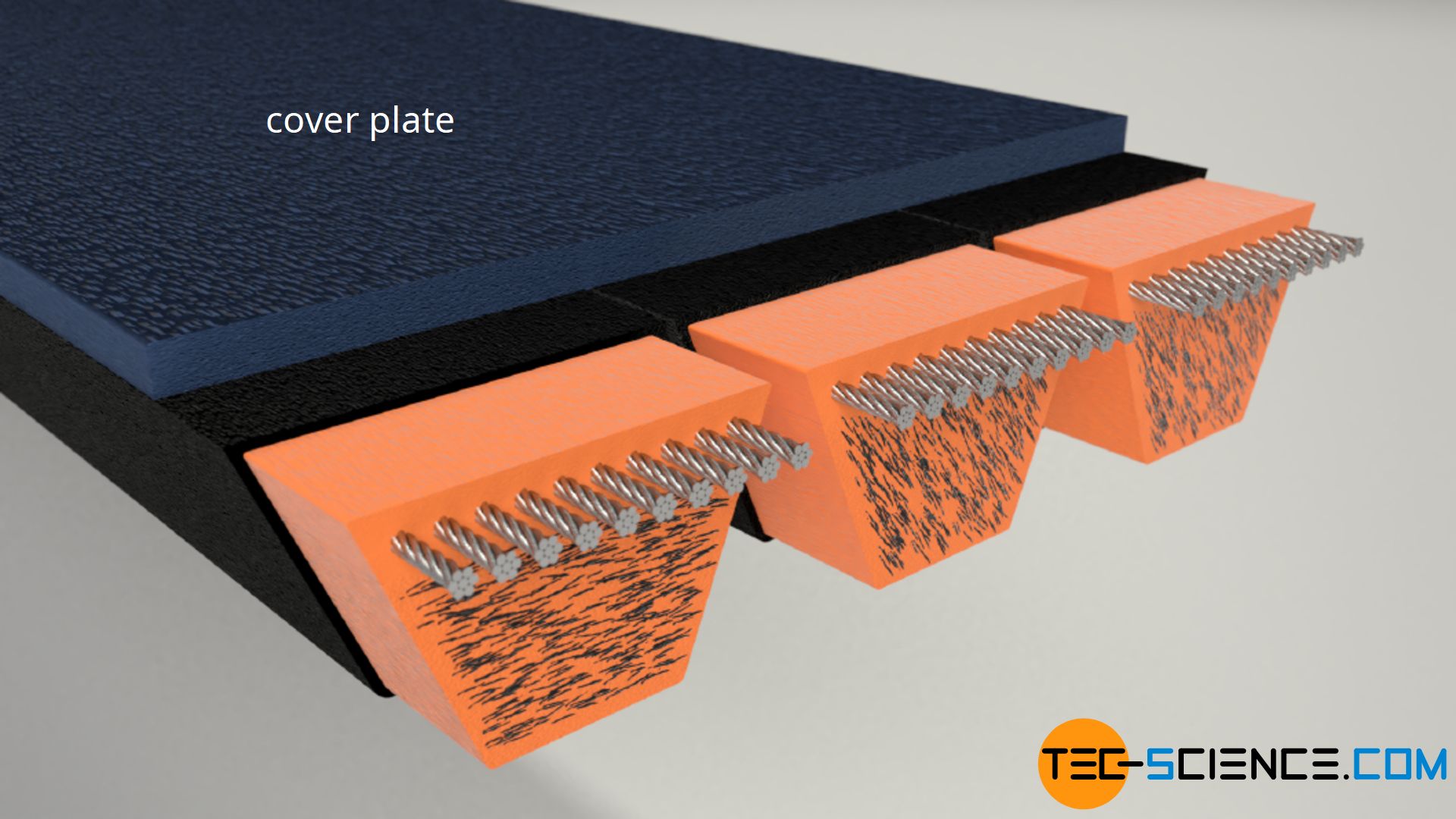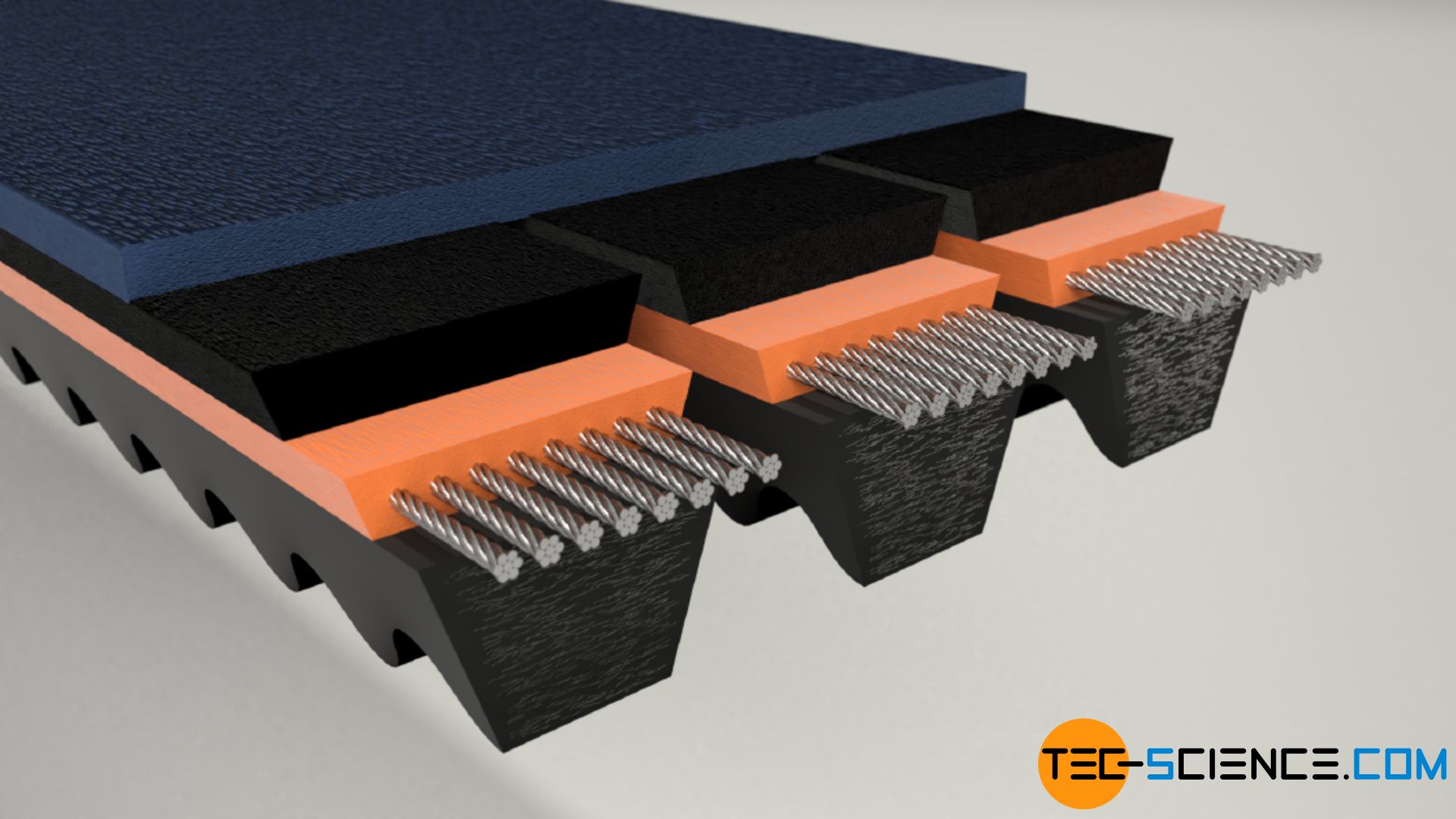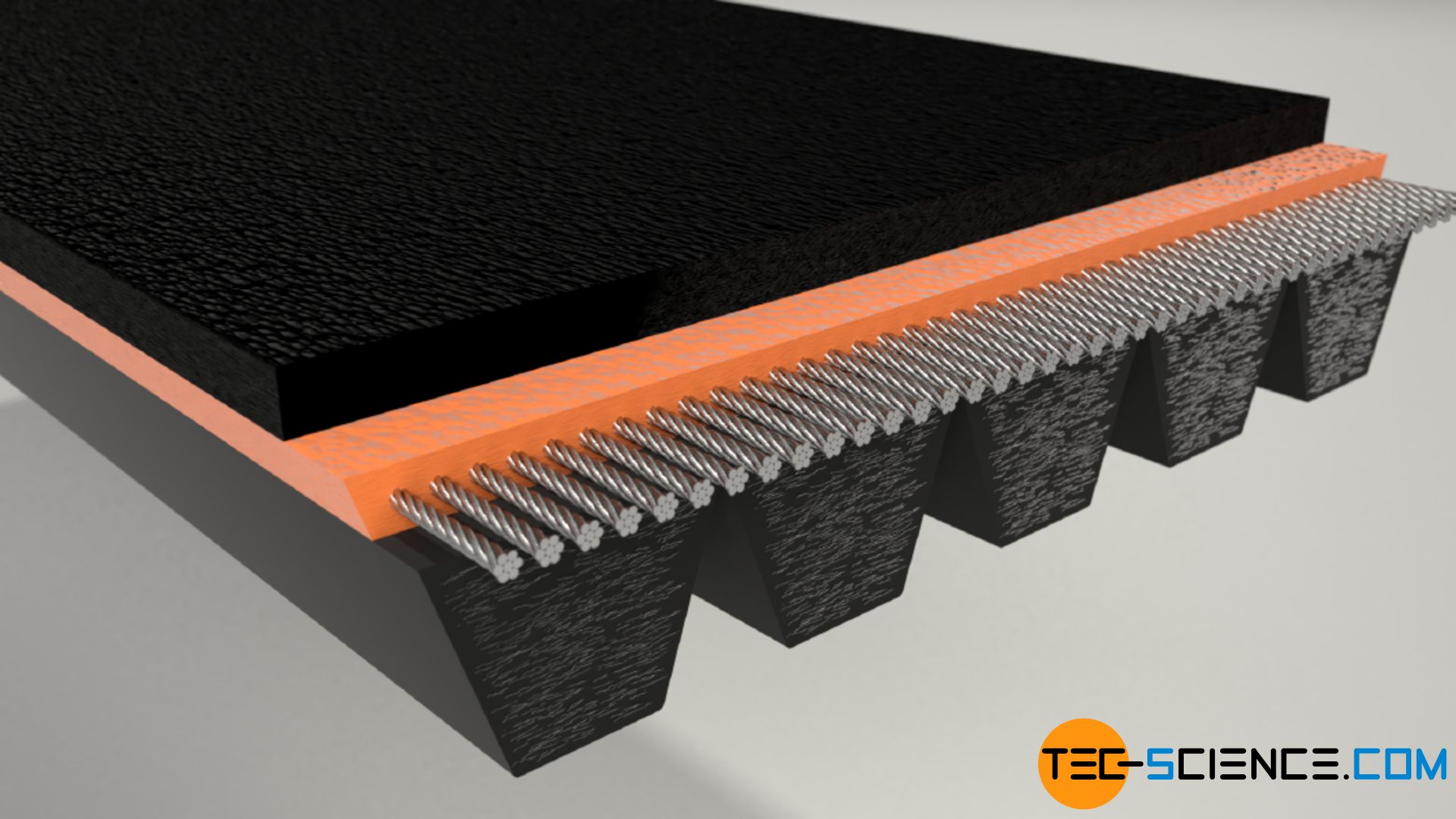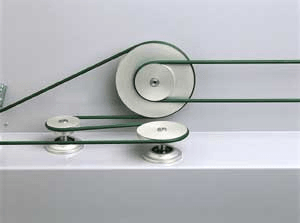Belts
What are Belts?
Belts are loops of flexible material used to connect two or more pulleys, this allows for the transfer of movement or power from one shaft to a different one [2]. They can be used in many places for many applications, such as in treadmills, and automobiles. In treadmills, belts provide rotation to the tread that the user runs on, this is not to be confused with the actual tread itself however [3]. The belt in this situation must be able to withstand dynamic loads as the user runs. In automobiles, belts are required for the precise timing and operation of the engine, working at thousands of rotations per minute (RPM) and ensuring no slippage, requires a very high performance belt [3].
Belt of a treadmill that is turning the tread [3] | Timing belt of a car [3] |
|---|---|
Types of Belts
Flat Belts
A flat belt is the simplest type of belt and it has a rectangular cross section. A typical flat belt will have a protective top layer, a middle layer made of tension cords and a rubber core, and a protective bottom layer often coated in a special rubber compound that increases the friction between the belt and the surface it is on and to increase the life span of the belt. If both sides of the belt are used, such as in a complex pulley system, the top layer of the belt would be coated like the bottom layer. Flat belts are often put on bulging pulleys so that they self-center on the pulley. The bulge is typically 0.3mm to 1.2mm in height. Flat belts are around 98% efficient. The main advantages of flat belts are that they are quiet, low wear, and are around 98% efficient. The main disadvantage is that a lot of force is needed to tension the belt to keep it on the pulley and the high tensioning forces puts a lot of stress on the bearings of the pulley [4].
Flat Belt on a Bulged Pulley [4] |
|---|
V-Belts
A V-belt is the most versatile type of belt and it has a wedge cross section. The wedge shape of v-belts takes advantage of the wedge effect which allows v-belts to have low tensioning forces. This means that a v-belt with the same tensioning as a flat belt can hold much more torque. A v-belt is thicker than a flat belt so it has to bend more to travel around a pulley which lowers efficiency. The wedge sides of the v-belt touch the pulley but the bottom of the belt does not touch the pulley. V-belts are designed to be used for specific pulley diameters at specific wrap angles because v-belts buckle and will stretch off of the wedge sides of the pulley, causing the belt to slip. The groove angle for most v-belts is either 32° or 38°. The tensioning cords of a v-belt are placed near the top, at the nominal width. The main advantage of v-belts is that they have low tensioning forces, so the bearing are under significantly less stress. The main disadvantage of v-belts is that they are around 95% efficient [4].
Standard Wrapped V-Belt [4] | V-Belt Buckling [4] |
|---|---|
Wedge Effect
V-belts are able to have lower tensioning forces than flat belts because of the wedge effect. For flat belts, the force of friction keeping the belt on the pulley is proportional to the radial force of the belt on the pulley. For v-belts, the force of friction keeping the belt on the pulley is proportional to the sum of the normal forces from the two angled wedge surfaces the belt rides on [4]. Based on the formulas in the image on the right, a v-belt with a groove angle of 32° will produce 3.6 times more friction with the same tensioning force. For equal frictional forces, the v-belt will require 0.28 times the tensioning force of a flat belt, meaning the bearing for a v-belt experiences almost a quarter of the load of a flat belt bearing.
Wedge Effect |
|---|
Wrapped, Raw Edge, and Cogged V-Belts
Every type of v-belt is either wrapped or raw edge. Wrapped v-belts have a complete outer layer around an elastomer core with tension wire. Wrapped v-belts offer additional protection over raw edge v-belts, so they are used in harmful environments such as on a hazardous chemical pump. Raw edge v-belts have a top layer, an embedding layer for the tension cord, and a bottom elastomer core layer. Raw edge v-belts are more flexible than wrapped v-belts, meaning they wear slower and are more efficient. Raw edge v-belts are used when a wrapped v-belt is not necessary. A cogged v-belt is a raw edge v-belt that has pieces of the bottom elastomer core layer removed to allow for greater flexibility. Cogged v-belts look like toothed belts, but they are not because the pulleys do not have teeth that the belt can lock into [4].
Wrapped Standard V-Belt [4] | Raw Edge Standard V-Belt [4] | Cogged Raw Edge Narrow V-Belt [4] |
|---|---|---|
Standard V-Belts
Standard v-belts are v-belts with a height to width ratio of 1:1.6. Standard sized belts balance the flexibility and power transmission of the narrow and wide belts [4].
Narrow V-Belts
Narrow v-belts are v-belts with a height to width ratio of 1:1.2. When compared to a standard v-belt of the same width, the increase in height allows for a better transmission of power at the cost of lower flexibility. A narrow v-belt with the same height as a standard v-belt transmits power as well, but it is thinner allowing it to fit better in compact machines. To offset the loss in flexibility, narrow v-belts can be cogged and/or raw edge [4].
Wide V-Belts
Wide v-belts are v-belts with a height to width ratio of 1:2. When compared to a standard v-belt the increased width means the v-belt is stronger. Wide v-belts are used for heavy power transmission and when large changes in speed occur such as in a continuously variable transmission (CVT). To increase flexibility, most wide v-belts are cogged and raw edge [4].
Double V-Belts
Double v-belts, also known as hex-belts are essentially two v-belts put together so that their cross section is a hexagon. Double v-belts are used when both sides of the v-belt need to transmit power [4].
Raw Edge Double V-Belt [4] |
|---|
Poly V-Belts
Poly v-belts, also known as serpentine belts, are v-belts that are shaped like kraftbands, but use a single embedding layer with tension cord like a flat belt. The combination of v-belts and flat belts allows poly v-belts to have advantages from both types. The main advantages of poly v-belts are high flexibility, high power transmission, and low bearing load. Poly v-belts are often used when one pulley drives multiple pulleys such as engine serpentine belts [4].
Raw Edge Poly V-Belt [4] |
|---|
Round Belts
Round belts are belts that have a circular cross section. Round belts are often used for motion transition and are very rarely used for power transmission. Round belts can be guided very easily with guiding pulleys due to their round cross section [4].
Round Belt [5] |
|---|
Timing Belts
Timing belts, also known as synchronous belts, are belts that have teeth that lock into matching teeth on the pulleys. Timing belts prevent slippage, which is why they are used in applications where keeping timing or accuracy is important such as engine timing belts or 3D printer belts [4].
Timing Belt [4] |
|---|
References
[1] Acorn Bearings, Belts & Pulleys. Accessed on: Mar. 10, 2021. [Online]. Available: https://www.acornbearings.co.uk/power-transmission/belts-and-pulleys
[2] J. Foszcz, Basic of Belt Drives, Plant Engineering, Sept. 1, 2001. Accessed on: Jan. 22, 2021. [Online]. Available: https://www.plantengineering.com/articles/basics-of-belt-drives/
[3] C. Layosa, Timing Belts and Pulleys: Application Examples, Misumi Mech Lab, June 29, 2016. Accessed on: Jan. 22, 2021. [Online]. Available: https://blog.misumiusa.com/timing-belts-pulleys-application-examples/
[4] tec-science, Types of Belts for Belt Drives, Sept. 2, 2018. Accessed on: Jan. 22, 2021. [Online]. Available: https://www.tec-science.com/mechanical-power-transmission/belt-drive/belt-types/
[5] Engineering 360, Round Belt Pulleys Information, Global Spec. Accessed on: Mar. 10, 2021. [Online]. Available: https://www.globalspec.com/learnmore/motion_controls/power_transmission_mechanical/round_belt_pulleys
Contributors:
User Last Update Lesley Lang 1215 days ago Former user (Deleted) Former user (Deleted)
Faculty Advisor: Chris Rennick, Michael Lenover (Alumni)



